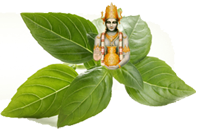About Ayurveda
 Ayurveda is the oldest surviving complete medical system in the world. Ayurveda is the art of living in harmony with nature. Ayurveda is derived from two Sanskrit root words: ‘Ayu’, which means Life, and ‘Veda’, which means the Knowledge. Thus Ayurveda refers to the Science of life.
Ayurveda is the oldest surviving complete medical system in the world. Ayurveda is the art of living in harmony with nature. Ayurveda is derived from two Sanskrit root words: ‘Ayu’, which means Life, and ‘Veda’, which means the Knowledge. Thus Ayurveda refers to the Science of life.
Ayurveda offering a rich, comprehensive outlook to a healthy life, its origins go back nearly 5000 years. To when it was expounded and practiced by the same spiritual rishis, who laid the foundations of the Vedic civilization in India, by organizing the fundamentals of life into proper systems.
There are four Vedas or treatises that form the basis of the Indian medical philosophy. These are the Rig-Veda, the Yajurveda, the Samaveda and the Atharva Veda. Ayurveda emerged as a branch of Atharva Veda (one of the four most ancient books of Indian knowledge, wisdom and culture). It dates back to over five thousand years and is one of the world’s oldest and most complete systems of natural healing.
The few other treatises on Ayurveda that have survived from around the same time, the most famous are Charaka Samhita and the Sushruta Samhita which concentrate on internal medicine and surgery respectively. The Astanga Hridayam is a more concise compilation of earlier texts that was created about a thousand years ago. These between them forming a greater part of the knowledge base on Ayurveda as it is practiced today.
Ayurveda therefore is not simply a health care system but a form of lifestyle adopted to maintain perfect balance and harmony within the human existence, from the most abstract transcendental values to the most concrete physiological expressions. Based on the premise that life represents an intelligent co-ordination of the Atma (Soul), Mana (Mind), Indriya (Senses) and Sharira (Body).
There are three doshas in Ayurveda: Vata, Pitta, and Kapha.
1. Vata
People are generally thin and find it hard to gain weight, because of this; Vatas have very little energy reserve and can tire easily and get themselves out of balance.
2. Pitta
People are generally of medium size and well proportioned. They have a medium amount of physical energy and stamina. Fire is a characteristic of Pitta.
3. Kapha
People tend to have sturdy, heavy frames, providing a good reserve of physical strength and stamina. This strength gives Kaphas a natural resistance to disease and a generally positive outlook towards life.
The JGS Health Care Pvt. Ltd., since 2009, has blended Ayurvedic expertise with modern medical research methodology, to extend the science of Ayurveda to produce scientifically verified herbal solutions.










